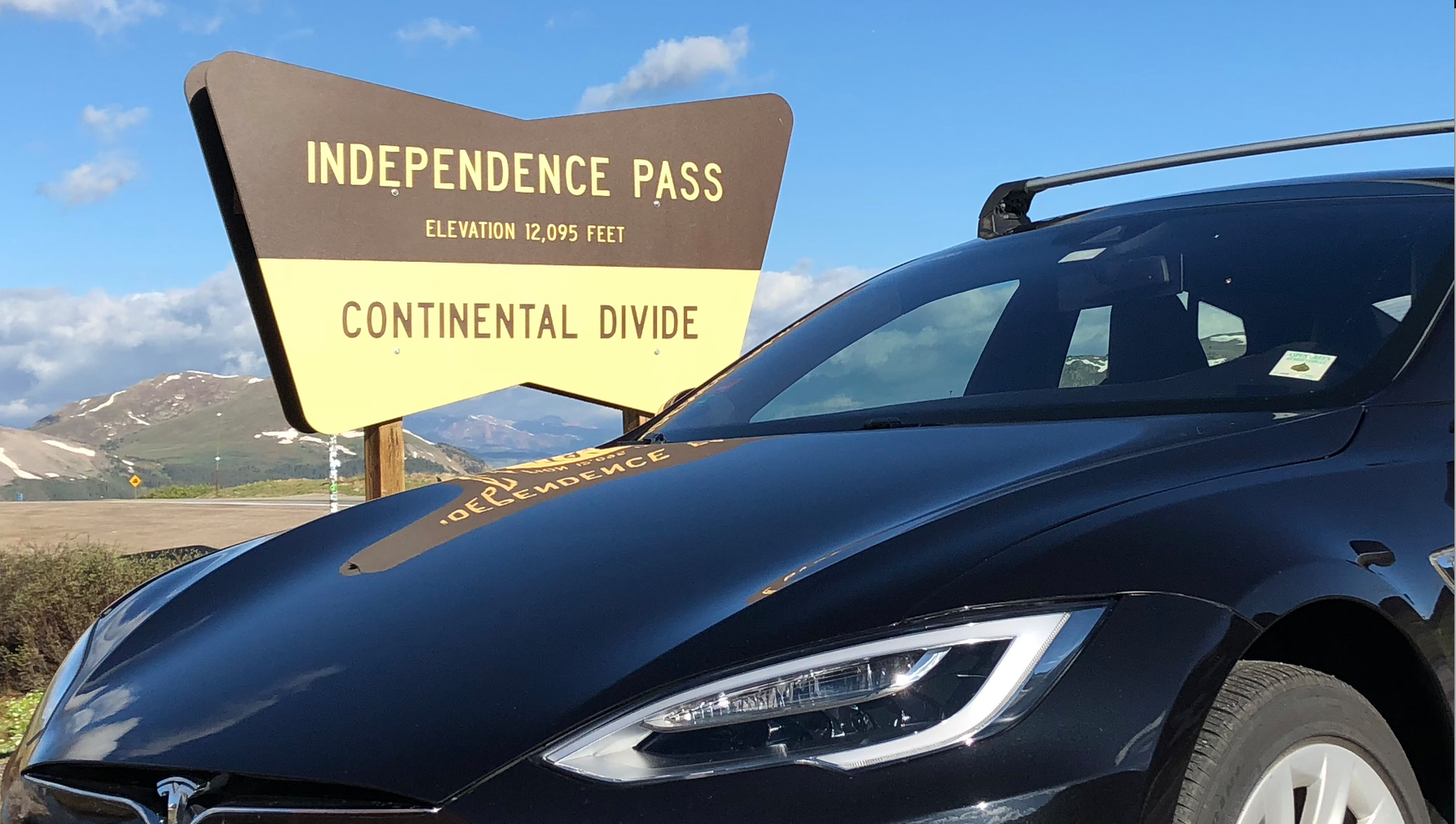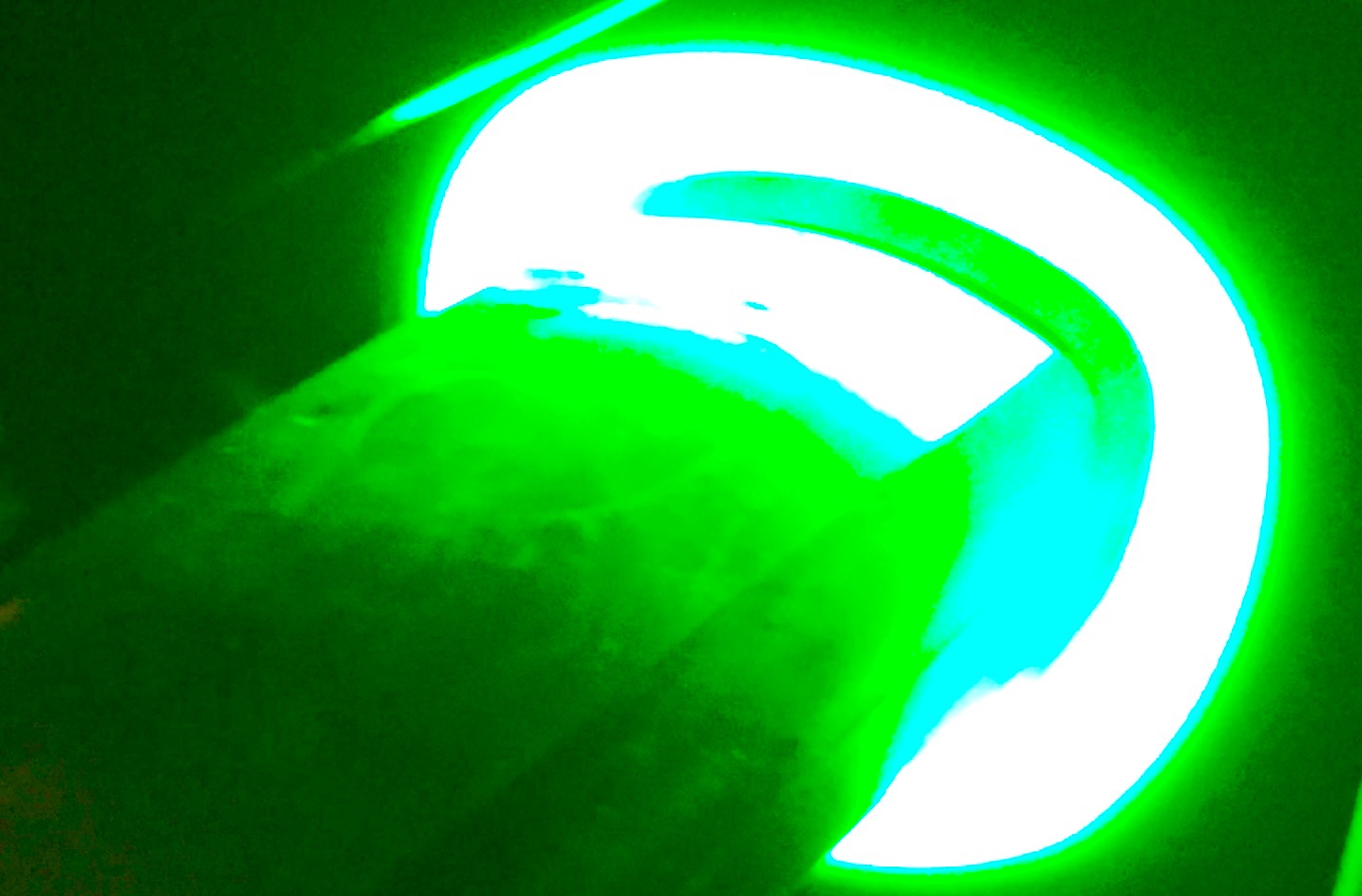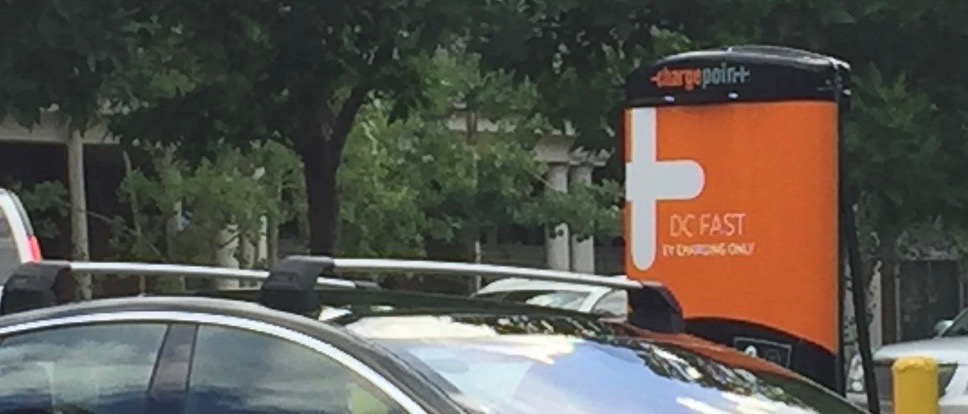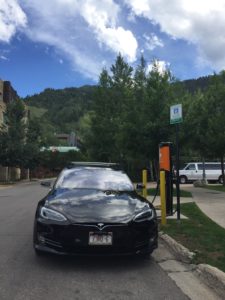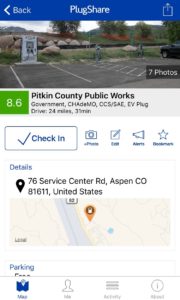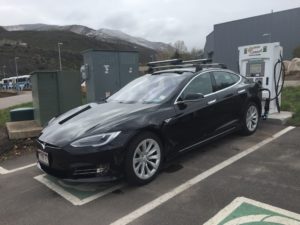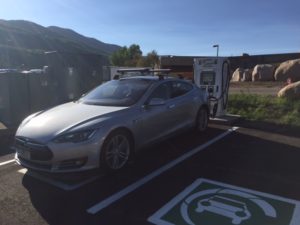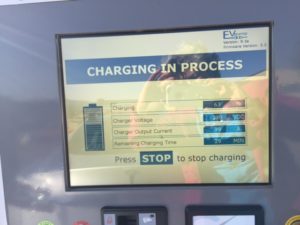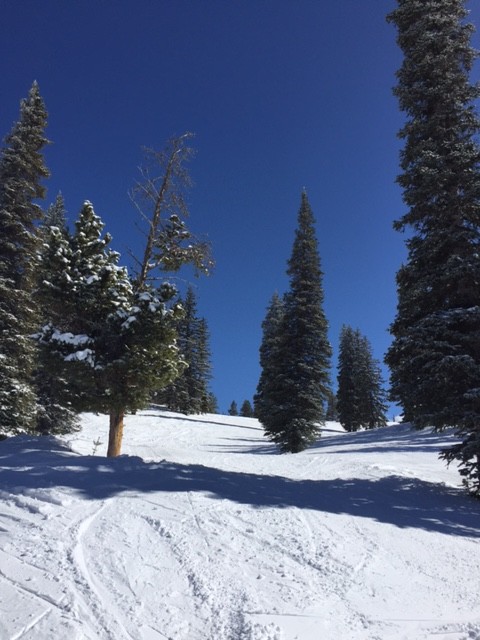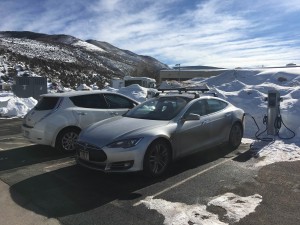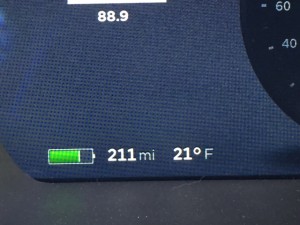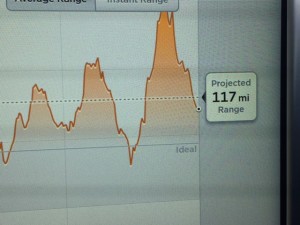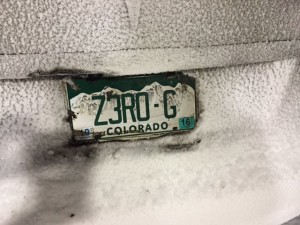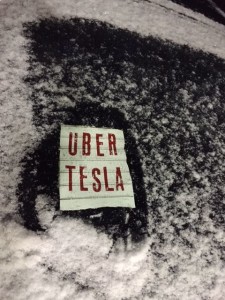“How long does it take to charge?” is a common question from my passengers. The answer is complicated including words like “amperage” and “transformer”. The answer may be much simpler pretty soon.
More charging options in Aspen
Now there are three… yes that’s right… three DC chargers in Aspen. One at the Rio Grande Parking garage (where a CHAdeMO adaptor is provided for Teslas). One across from the airport at Pitkin County Public works; and the newest one a Chargepoint DC CHAdeMO in back of CP burger on Galena street.
You’ll want to put the Plugshare app on your phone for directions and to check and see if the station is currently occupied.
Fast Charge CHAdeMO
AC DC
Thank you Pitkin County!
There is a brand new shiny Direct Current charger across from the Aspen Airport. This will input about 140 miles per hour into the batteries which is much nicer than the 20 miles per hour from the 30 amp chargers in the next parking slots. To do this with a Tesla you need an adapter cable- well worth it when you see the number of DC charging stations which are popping up.
What do you do while the car is charging?
I like to keep the battery between 150-265 miles. That increases the life of the battery.
The best lunch in Aspen as far as I’m concerned is at Bonnie’s which just happens to be on Ajax.
So, what do I do while the Tesla is charging?
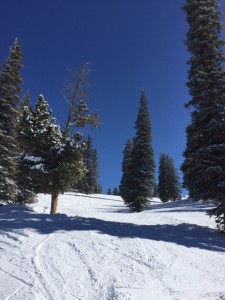
Ski a few laps of course….
Z3RO-G
Can you get to Vail?
That’s frequent question. “How far can you go on a charge?”
Although I’ve gone from Carbondale to Denver on a single charge it’s not recommended. There is a “sweet spot” on the Model S 85 between 150 and 265 miles and that’s where you want to keep the battery.
Fortunately more and more superchargers keep popping up all the time. To go from 150 to 265 takes about 40 minutes.
So, to get to
Aspen to Vail – add 40 minutes for a supercharge in Glenwood.
Aspen to Denver- add 80 minutes for 2 supercharges one in Glenwood and one in Silverthorne.
Aspen to Grand Junction- add 40 minutes for a supercharge.
It’s best if long distance trips are booked one day in advance to insure the battery is as close to full as possible when I pick you up.
Z3RO-G
Your Tesla Taxi in Aspen
Charging in Aspen
One of the most frequent questions is “How long does it take to charge a Tesla?” and the answer is “That depends on the charger.” Here at the Pitkin County Public Works charger (across from the airport between the animal shelter and the bus barn) the charge is 20 miles per hour. At the Rio Grande parking lot in Aspen it’s 28 miles per hour. At the supercharger in Glenwood Springs it’s 280 miles per hour. We looooooove the supercharger.
Winter miles, summer miles
“How far can you go on a charge?”
Every time a rider asks that question I pause and think. “How can I explain this easily?” Riders may think they’re taking a test ride in a Tesla but really I’m testing my ability to explain what electric car ownership in the mountains really means.
Here’s the deal, there are summer miles and there are winter miles. Winter miles are harder on the batteries- by a long shot.
Here’s a pic I took of the dash yesterday afternoon. The battery is showing 211 miles left in the charge. In summer this would be true. In fact in summer I could probably get a bit more mileage out of that charge.
But there is another graph to watch which predicts how much range you have at your current energy usage. This is the real mileage estimate given the last 30 miles of driving. This is what the “watts per mile” gauge with projected range on the touch screen says at the same time the battery is reading 211 miles:
That’s 117 miles vs 211 miles.
Big difference.
So, what are the factors which contribute to this? First off, batteries hate cold. Even when I’m storing the Tesla overnight in the studio plugged in the cold still sucks life out of the battery.
There is less regenerative charging when the batteries are cold. There is a lot of up and down in the mountains and during summer I can use that to my advantage. Every time I go downhill I put juice into the batteries… but not so much in winter. Tesla has a safety feature when the batteries are cold which limits regenerative braking.
Friction. Snow tires are soft, winter roads are bumpy, the wheel wells fill up with snow easily and need to be power washed. All of these factors add friction which reduces efficiency.
If the batteries are cold, so am I. Yes, I’m running the heat in the car. Tesla will remind you that it uses less energy to warm your seat than your entire car but that does not keep the frost off the windows. Running the “climate” control on high and turning the fan down is the only way I’ve found to keep the windscreen clear.
“How far can you go on a charge?”
“Well, that depends, on summer miles or winter miles…”
driving through the snow… in a warm and cozy Tesla….
We had a little of the fluffy stuff yesterday and more today.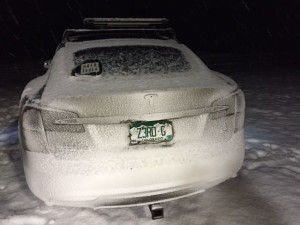
That meant some of our flights out of Aspen Airport were grounded. That meant two round trips to the Eagle/Vail airport yesterday.
The first trip was fine with the charge on the batteries but the second round trip needed a recharge. Fortunately for the Tesla there is a supercharger in Glenwood Springs (40 miles from Aspen) which makes this type of range in the winter possible. The supercharger can cycle up to 95 amps which means recharging the batteries at over 230 miles in an hour. Translation- recharge in 50 minutes which is perfect for a snack at one of the restaurants on Market Street.
So yes, Tesla does do winter even if it means driving a little slower and stopping for snacks.
Climate-CAB your Tesla Taxi in Aspen.
